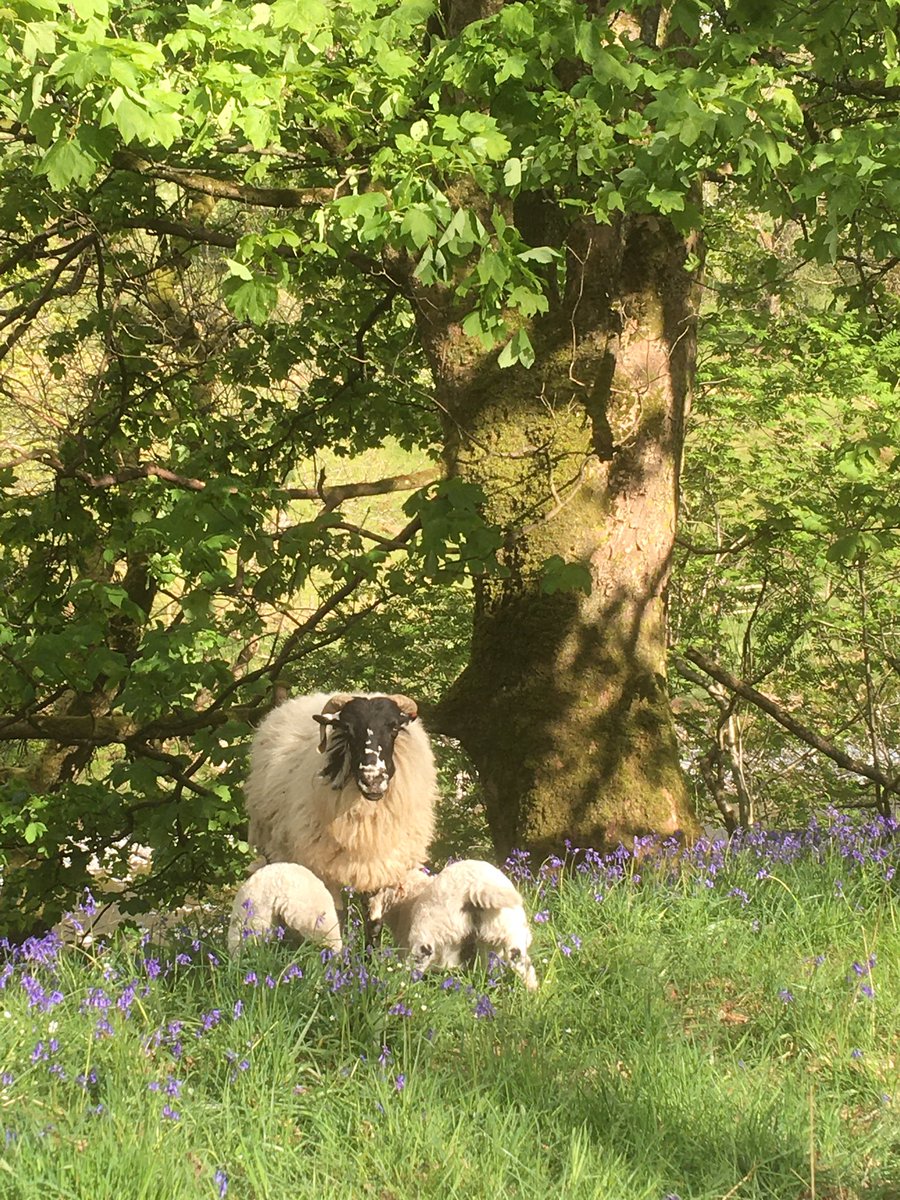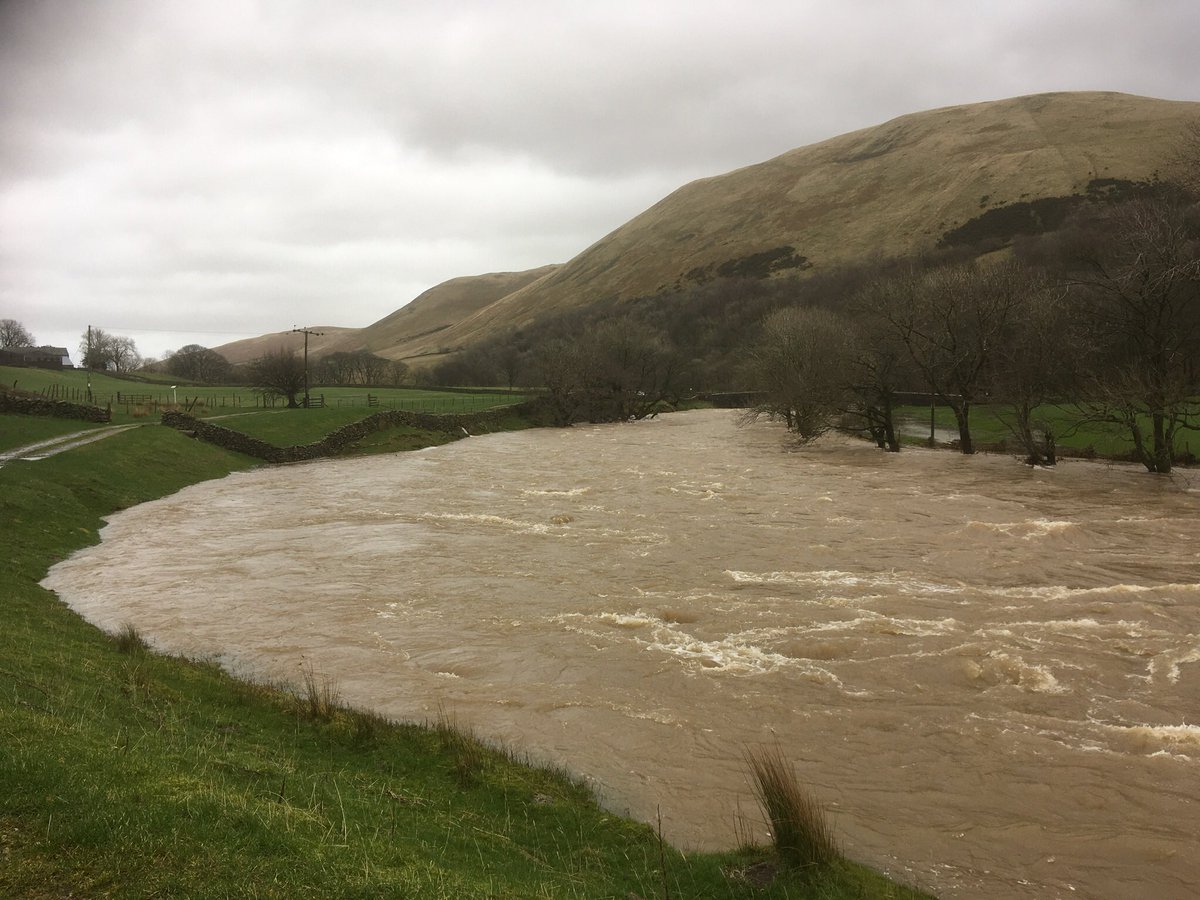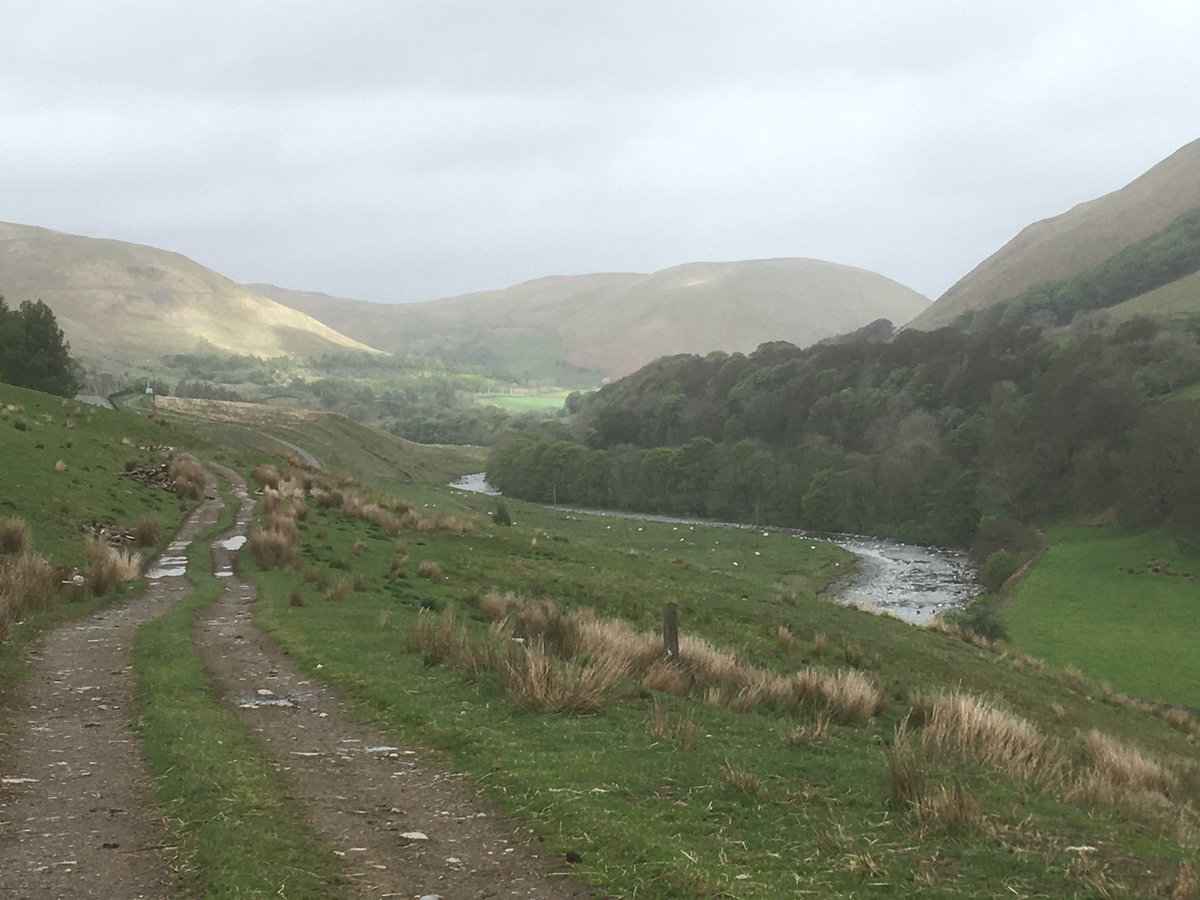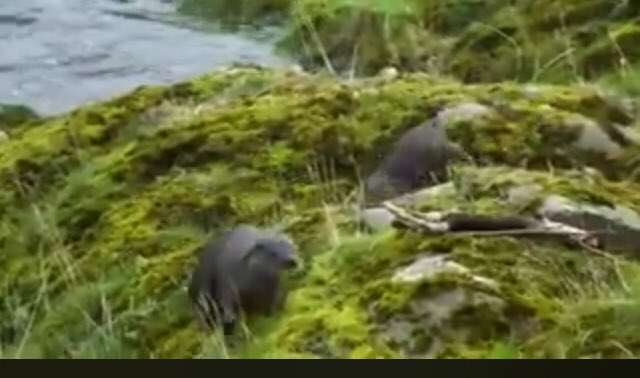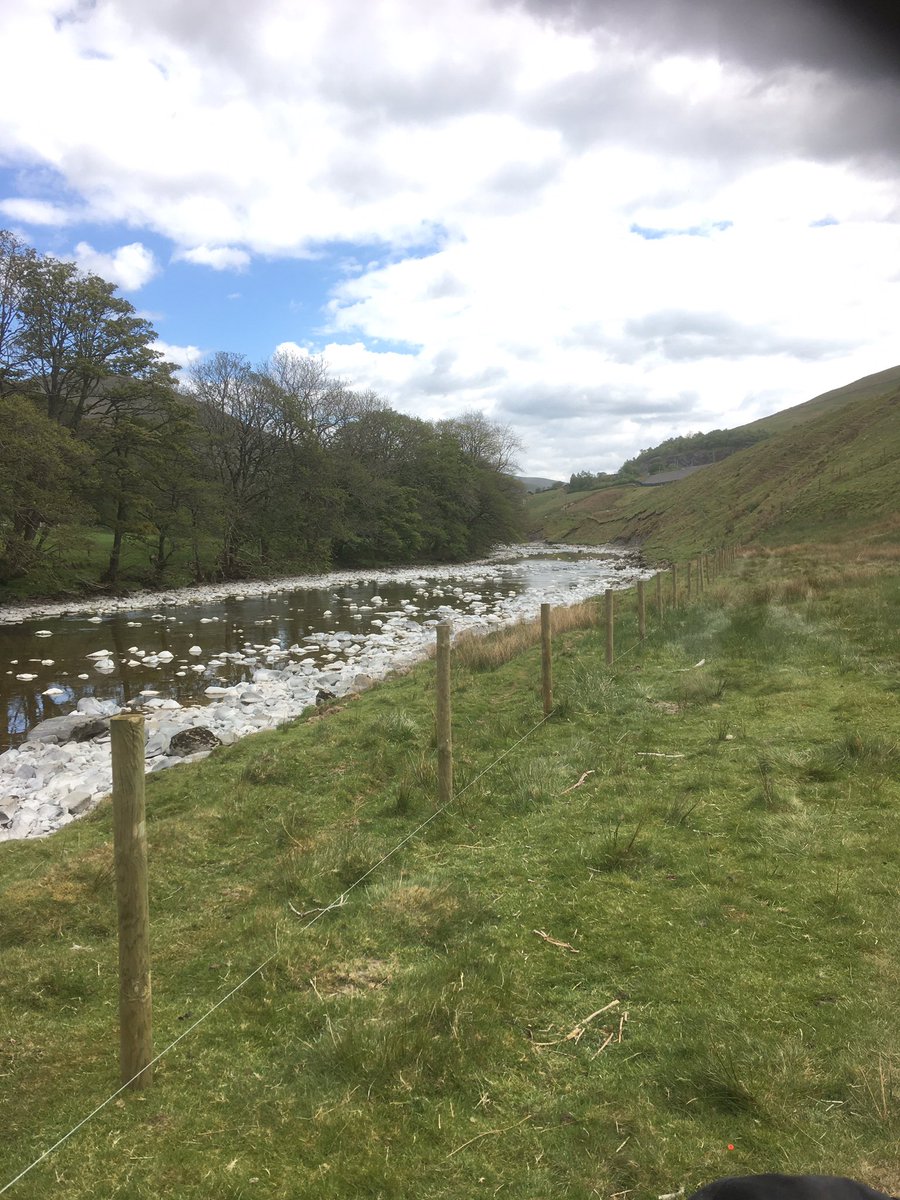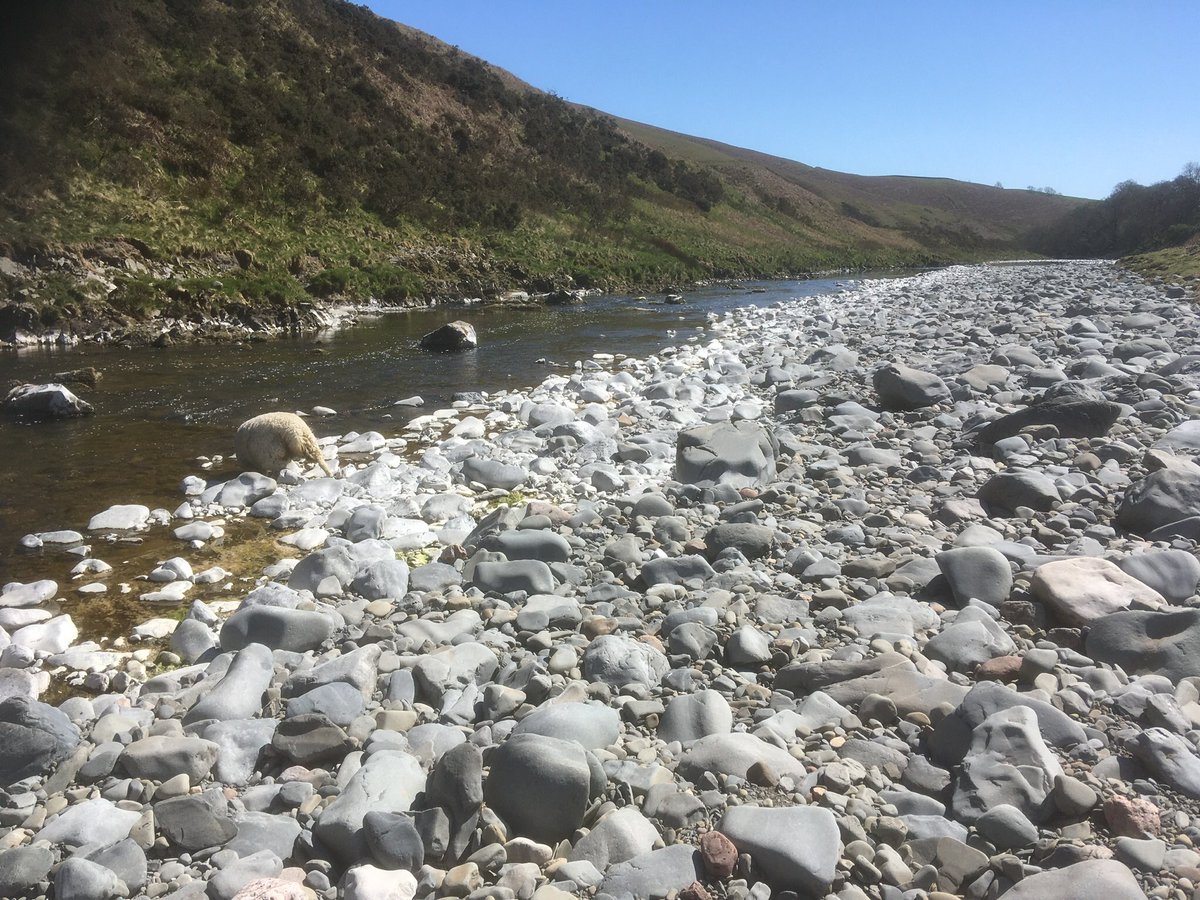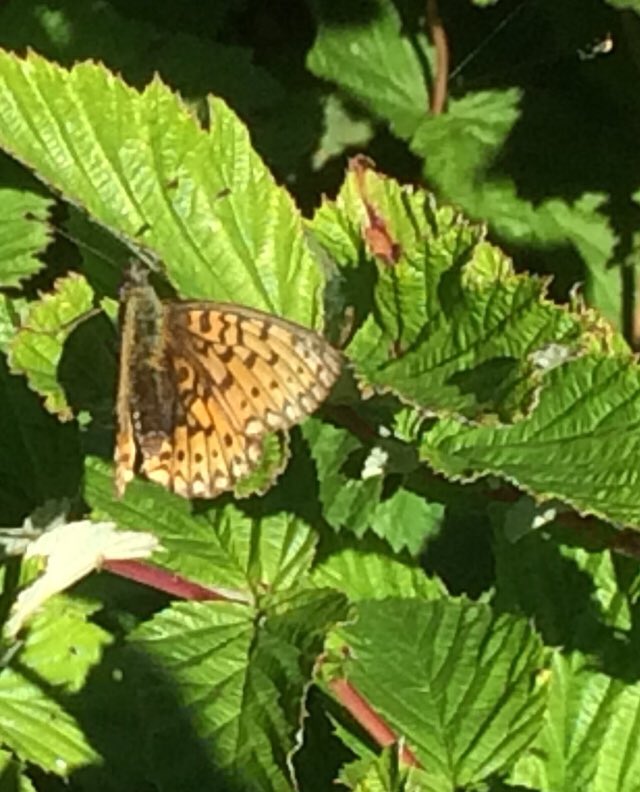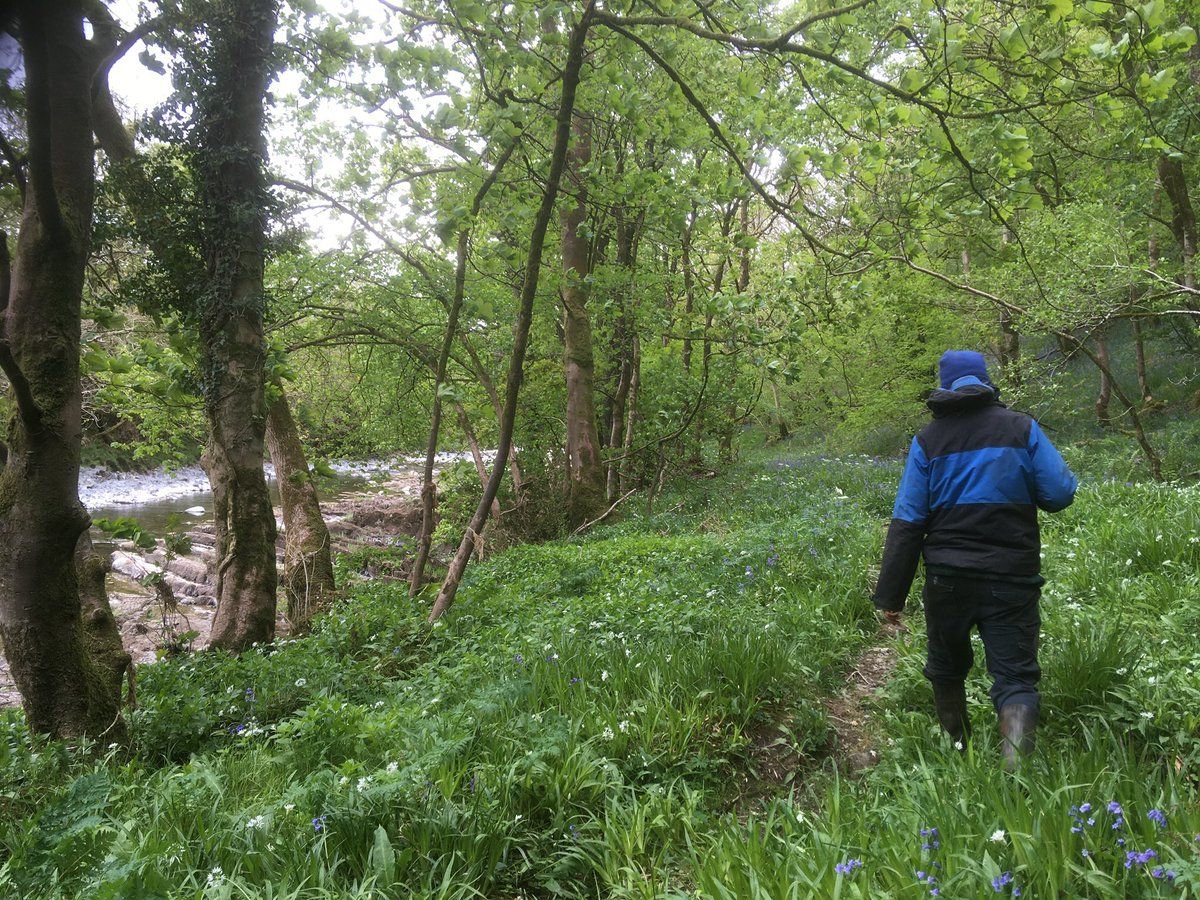So, now we understand how the rotational grazing makes the farm more productive, how does the scheme help the environment here? Thread...
More vegetation will make the landscape more resilient in high rainfall events, and will hold more water upstream of built up areas, but that is not really the main aim.
The riparian strips are areas that will naturally regenerate next to river banks (grow trees and scrub). These stop erosion, pollutants and provide habitats for wildlife. The shade cools the river for fish. The whole 3.5 mile section becomes a nature recovery network.
The riparian strips allow the otters to build more holts on our farm. We are very lucky to see them regularly
We have red squirrels at both ends of the farm. The new nature recovery network will act as a wildlife corridor for them to travel about
The river will be shaded and this will allow it to remain cool for the fish that live there, even if climate change makes the area hotter over time
We have the small pearl bordered butterfly here. Some areas will be managed to protect the particular plants that they require
The mosaic of wildlife areas and riparian strips will become a nature recovery network over time, allowing connectivity between Gill Woods and Yorkshire Woods- two areas of ancient woodland.
I’m not saying it will be brilliant or faultless. I have designed this scheme on my own without help, which is how mid tier countryside stewardship applications work, but it’s just an example of how one hill farm is trying to do its best for nature.
We have many more plans for new hedgerows, restoring the cultural environment and improving woodlands. That’s for another day...thank you for your interest.

 Read on Twitter
Read on Twitter